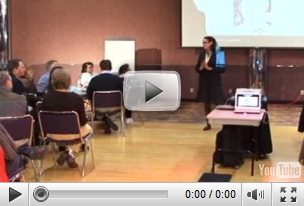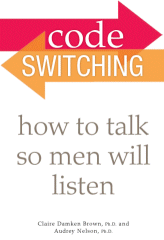
February
2010
Newsletter
Audrey's Web site | Code Switching website
Opaque versus Transparent Communication I have a confession. Each month, as I write my Smart Talk column, I am motivated by an inspiring article, book or piece of research I read OR irritated by communication styles I experience in both my personal and professional life. This month it is irritation! What is an “opaque” communicator (OC)? I believe this style can be conscious or unconscious. The manipulative OC employs this style for multiple reasons, consciously and deliberately. Perhaps it is due to a perceived threat, insecurity or simply the mistrust of the work environment. The OC is afraid to reveal him or herself to others. Their style reveals part of the picture but not the entire thing. They reveal just enough to satisfy listeners but not everything that might be important. The OC relies on being indirect. This is the person you say to yourself, “I think something more is going on.” Simply, you do not know where they are coming from. Not surprisingly, he or she may not know either! Do you remember the Johari Window we studied in Psychology 101? The Johari Window model developed in 1955 by psychologists, Luft and Ingram, provided a simple and useful tool for illustrating and improving self-awareness and mutual understanding between individuals within a group. I think it is relevant due to the current emphasis on, and influence of, emotional intelligence, i.e., soft skills, empathy, cooperation, teamwork and interpersonal development. The four quadrants of the Johari Window are relevant to my discussion of the opaque versus transparent communicator: BLIND: what is unknown by the person about her or himself but which others know. The opaque communicator generally operates from the “hidden” quadrant and, occasionally, may come from the “blind” quadrant. The result is we feel uncomfortable interacting with an OC style. Decision making suffers, the trust level is low and the bottom line may be impacted. OC’s require some work and effort in drawing them out of hiding and in the case of the manipulative OC, one may need to name the game. Let them know you know they are holding back. Tell them you think more is going on and you have an incomplete picture. |
Did
you miss one of the Smart Talk Columns? |
Browse
the archives of Audrey’s 2006 to date |
|
Follow Audrey on |
|
It's here! |
|---|
|
||||||
Audrey: Farm Credit Council Services Please indicate which parts, if any, of this workshop need to be improved. Please provide suggestions
|
| "Audrey's
Top 4 CD Communication Hits" |
||||
 |
 |
 |
 |
 |
 |
 |
|||


